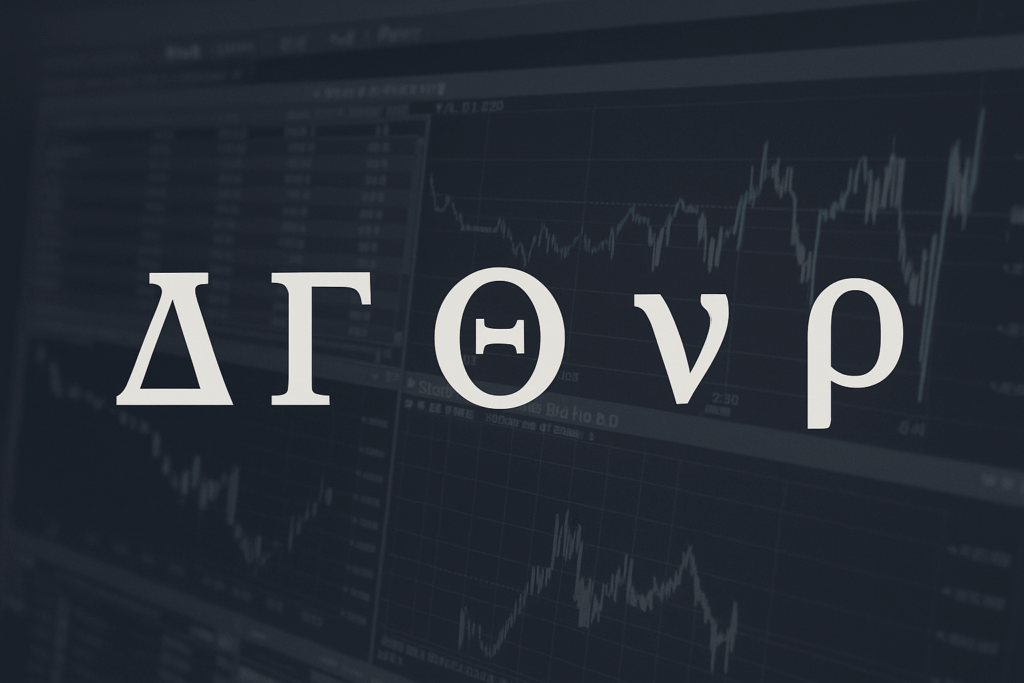They’re just nicknames for how an option behaves when things change — like price, time, or volatility. Each Greek tells you something different.
🧩 The Big 5 Greeks (Plain English Edition)
🔺 Delta = Directional Sensitivity
“How much does the option move if the stock/index moves $1?”
If Delta = 0.50, the option gains $0.50 for every $1 move in the underlying.
Calls have positive Delta (bullish), puts have negative Delta (bearish).
Think of Delta as your odds: A 0.50 delta = ~50% chance of expiring in the money.
⏳ Theta = Time Decay
“How much value does the option lose each day?”
Theta is always negative for buyers — options lose value as time passes.
A Theta of -0.10 = option loses $0.10 per day, all else equal.
This is why holding options too long can eat your profits.
💨 Vega = Volatility Sensitivity
“How much does the option price change if volatility rises 1%?”
More volatility = more expensive options.
High Vega means your option is sensitive to market fear (VIX).
Traders buy options before expected volatility (like FOMC or earnings).
🪂 Gamma = Delta’s Acceleration
“How fast is Delta changing as price moves?”
Gamma is highest near the money.
A big Gamma means your option becomes more sensitive the closer you get to your target.
Think of Gamma like boost mode — the closer you are to your target, the more explosive the option becomes.
🧮 Rho = Interest Rate Sensitivity
“How much does the option price change if interest rates move 1%?”
Mostly relevant for long-dated options.
Higher rates can increase call value and decrease put value (slightly).
📈 Example in Real Trading Terms:
Let’s say you buy a call option on NAS100USD:
🟩 Delta = 0.40 → For every $1 rise in NAS100, your option gains ~$0.40
🟥 Theta = -0.10 → You lose $0.10 of value per day if price does nothing
🟦 Vega = 0.15 → If volatility rises 1%, your option gains $0.15
🟧 Gamma = 0.05 → If NAS100 goes up, your Delta will rise, too — making it more profitable faster
🧠 Why This Matters Even if You Don’t Trade Options
Delta helps you understand directional risk
Theta warns you about time decay
Vega teaches you when markets are too quiet or too fearful
Gamma shows you how risk and reward accelerate
Rho reminds you macro factors like rates still matter


